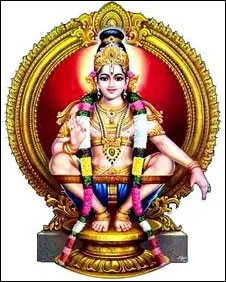This is special day esoterically symbolizing the wedlock between the Divine Polarities - potential and kinetic aspects of Divinity, celebrated as the திருக்கல்யான வைபோகம் (tirukkalyāna vaibōgam - Sacred Wedlock) between the male and female aspects of Divinity.
For example, the Divine wedlock (wedding) ritual between Lord பரமசிவன் (paramasivan) & பார்வதி (pārvati) is celebrated very religiously across all over Tamil Nadu on the sacred day. Their wedding is believed to have taken place at श्री कैलाश (śrī kailāśa). The शिव महापुराण (śiva mahāpurāṇa) narrates in detail about this event.
This event is very religiously celebrated every year in many Shiva temples particularly the பங்குனி உத்திர மகோத்சவம் (panguni uttira mahōtsavam) celebrated at Mylapore ஸ்ரீ கபாலீஸ்வரர் திருகோயில் (sri kabālīsvarar tirukkōyil) is very famous. This fact is testified by none less than the great mystic saint poet and child prodigy - திருஞானசம்பந்த நாயனார் (tiru jñānasambandha nāyanār) in his soul melting தேவார பதிகம் (dēvāra patigam) - (#1977)
Interestingly this day not only marks the sacred wedding events of Hinduism two greatest theological deities - परमशिव (paramaśiva) & महा विष्णु (mahā viṣṇu) with their consorts. But it is also the day associated with the Divine wedlock of their children. The Divine wedlock between தெய்வயானை (deivānai) who is none other than is none other than அமுதவல்லி (amudha valli) one of the two daughters of திருமால் / महा विष्णु (tirumāl/ mahā viṣṇu) and Lord முருகப்பெருமான் (murugapperumān) the son of பரமசிவன் (paramasivan) also is happened on this sacred day.
Again almost all திருமுருகன் கோயில்கள் (tirumurugan kōyilgaḻ - Lord Murugan shrines) will celebrate this event in a grand scale and among them the sacred shrine of திருபரங்குன்றம்(tirupparaṅkunṛam), considered to be the முதல் வீடு (mudhal vīḍu - first house) among the sacred அறுப்படை வீடுகள் (aṛupadai vīḍugaḻ). கந்த புராணம் (kanda purāṇam) gives a very detailed account of this marriage.
Esoterically speaking these Divine marriage rituals highlight the essence of spiritual communion between the जीवात्म (jīvātma - bound soul) & the परमात्म (paramātma - divine soul) - in other words ஜீவ - சிவ ஐக்கியம் (jīva siva aikkiyam - soul-god communion). The devotional poetry highlighting such bridal mysticism in நாயகன் நாயகி பாவம் (nāyagan nāyagi bāvam - hero-heroine roleplay) is a common theme mystic traditions of many religious belief systems including the வைணவ ஆழ்வார் பாசுரங்கள் (vainava āṙvaar pāsurāṅgaḻ), சைவ திருமுறை பதிகங்கள் (saiva tirumuṟai padigaṅgaḻ), Sufi mystic poetry, bridal theology in Christianity (Bride of Christ) etc.
Incidentally today i.e. பங்குனி உத்திரம் (paṅguni uttiramum) is also the சுவாமி ஐயப்பன் ஜெயந்தி /श्री धर्मशास्ता महा अवतारधिनस्य (suvāmi aiyappan jeyanti /śrī dharmaśāstā mahā avatāradhinasya - Grand Incarnation day of Lord Aiyappa / Sri Dharma Shastaśrī) . Lord சுவாமி ஐயப்பன் (suvaami aiyappan) as the हरिहरपुत्र (hariharaputra – begotten son of Vishnu-Shiva) represents the महातत्त्व परमानन्दस्य (mahātattva paramānandasya – Supreme Principle of Transcendent Bliss) evolved out of the திருக்கல்யானம் (tirukkalyānam - Sacred Wedlock) between the निर्गुण / निश्कल (niśkala – potential/ being) & सगुण / शकल (śakala - kinetic/becoming) aspects of ब्रह्मत्व (brahmatva – Divinity).
 |
| Lord in योगसन (yogāsana – yogic pose) |
In Vedantic terms, the duo represents सर्वसत् /सर्वव्याप्ति (sarvasat /sarvavyāpti – Omnipresence) & सर्वचित् /सार्वज्ञ (sarvacit /sārvajña- Omniscience) and in theological symbology as the தேவன் (dēvan – God) & the தேவி (dēvi – Goddess) principles and their mutual योग (yoga – union) leads to the third principle of आनन्द (ānanda - Bliss). We have already observed that this day is also celebrated as பங்குனி உத்திரம் (paṅguni uttiramum) ritualizing the मैथुन (maithuna - Sacred Wedlock) between शिव (śiva - Divine Father) & पार्वर्ति (pārvarti - Divine Mother) and முருகன் (murugan) as சோமஸ்கந்தன் (sōmaskandan) is the beloved குமரன்(kumaran – offspring) representing आनन्द (ānanda - Bliss)
Interestingly the same philosophy is reflected in the हरिहर पुराण (harihara purāṇa) as well, wherein the नारि तत्त्व (nāri tattva – female principle) is played by the हरि/ विष्णु (hari /viṣṇu). You may wonder, why essentially हरि (hari - a male principle) is used as disguise of a मोहिनि (mohini - female principle) here. In my opinion there is a hidden message here as well. It reiterates the fact that there is a man in a wo(man) or male in a fe(male). In other words, male and female principles are two sides of the same coin.
Thus, essentially it symbolizes the union of the Divine Polarity and their communion leads to Holy Trinity. Philosophically this union can be interpreted in many ways
- सत् (sat - omnipresence) + चित् (cit - omniscience) = आननद (ānanada - omnibliss)
- सत्यं (satyaṁ - truth / existence) + शिवं (śivaṁ - auspiciousness/benignity) = सुन्दरं (sundaraṁ - beauty)
- அ /अ(a) + உ/उ (u) = ஓம்/ॐ (aum /OM)
- உயிர் (uyir - soul) + மெய் (mei - body) = உயிர்மெய் (uyirmei - life)
- पुरुष (puruṣa - spirit) + प्रकृति (prakṛti - matter) = प्रपञ्च (prapañca - world)
- नाद (nāda - wave/ energy) + बिन्दु(bindu – particle / energy) = कला (kalā - manifestation)
- शून्य (śūnya – void/zero) + अनन्त (ananta – boundless / infinity) = कैवल्य (kaivalya – absoluteness / singularity)
- ஒளி (oḻi – light / visual) + ஒலி (oli – sound /verbal) = ஒலியொளி (olIoḻi - audiovisual)
- देश (deśa - space) + काल (kāla - time) = निमित (nimiṭa – causality /dynamics)
- वाचक/शब्द/ग्राहक (vācaka/śabda/grāhaka – ideation/subject/cognizer) + वाक्य /अर्थ/ग्राहय (vākya/artha/ grāhaya – refferent/object/cognized) = ज्ञान (jñāna – wisdom / knowledge)
Whenever I think of this divine wedlock I am only reminded of the following golden verse from रघुवम्स (raghuvamsa) composed by महाकवि कालिदास (mahākavi kālidāsa)
For further reading
|
# |
Blog Topic |
Blog URL Link |
|
1 |
Spiritual Significance of Lord முருகன் (murugan) and His festivals |
https://whatisgod-religiousfestivals.blogspot.com/p/spiritual-significance-of-lord-murugan.html
|
|
2 |
ஓம்! சுவாமியே சரணம் ஐயப்பா (ōm!
suvāmiyē
saraṇam aiyappā)! |
https://whatisgod-religiousfestivals.blogspot.com/p/om-suvamiye-saranam-aiyappa.html
|






No comments:
Post a Comment